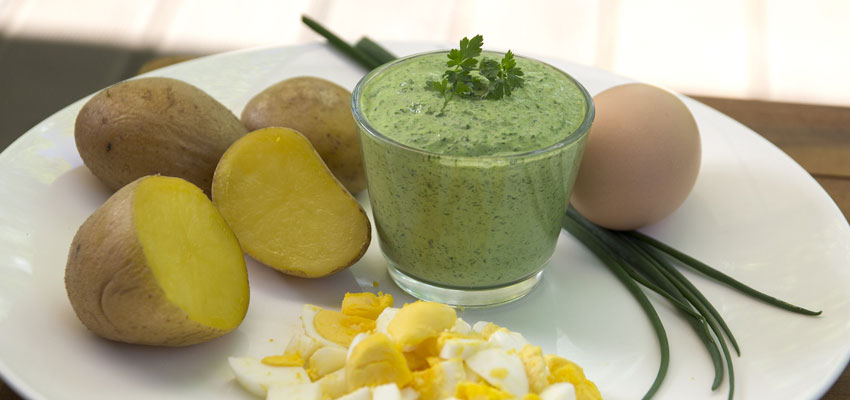Der letzte EU-Vorschlag sieht unterschiedliche zulässige Höchstgehalte je nach der Art der Kräuter vor. Einigen sich die Mitglieder des zuständigen SCoPAFF 1) der EU-Kommission am 23.6. in ihrer nächsten Sitzung, könnten schon im Juli die neuen Grenzwerte gelten.
Der aktuelle Verordnungsentwurf zur Änderung der Kontaminantenverordnung EU 1881/2006 sieht folgende maximal zulässigen Höchstmengen an Pyrrolizidinalkaloiden vor.
Die folgenden Angaben sind der Entwurfsfassung der Verordnung entnommen und vorläufig, daher nur informativ zu betrachten. Zudem haben einige EU-Länder zwischenzeitlich bereits strengere nationale Regelungen erlassen. Belgien untersagte z.B. die Verwendung von Borretsch in Lebensmitteln, das in Deutschland eines der 7 frischen Kräuter der berühmten Frankfurter „Grünen Sauce“ ist und aus der regionalen Spezialität als wichtige Geschmackskomponente wohl kaum wegzudenken wäre.
Tabelle und zugehörige Anmerkungen des Entwurfs nur in englischer Sprache verfügbar!
|
|
|
Maximum Level (*) |
|
8.4.1 |
Herbal infusions (dried product) (**) (***) with the exception of herbal infusions refferred to in 8.4.2 and 8.4.4 |
200 |
|
8.4.2 |
Herbal infusions exclusively composed of Rooibos, Anise (Pimpinella anisum), Lemon balm, Chamomile (Matricaria chamomilla), thyme, peppermint, Lemon verbena (dried product) (**) (***) with exception of the herbal infusions referred to in 8.4.4 |
400 |
|
8.4.3 |
Tea (Camellia sinensis) and flavoured tea (****)(Camellia sinensis) (Dried product) (***) with the exception of tea and flavoured tea referred to in 8.4.4 |
150 |
|
8.4.4 |
Tea (Camellia sinensis) and flavoured tea (****)(Camellia sinensis) and herbal infusions for infants and young children (dried product) |
75 |
|
8.4.5 |
Tea (Camellia sinensis), flavoured tea (****) and herbal infusions for infants and young children (liquid) |
1.0 |
|
8.4.6 |
Food supplements containing herbal ingredients (**) (****) with the exception of food supplements referred to in 8.4.7 |
400 |
|
8.4.7 |
Pollen based food supplements (39), Pollen and pollen products (39) |
500 |
|
8.4.8 |
Borage (fresh, frozen) placed on the market for the final consumer (**) |
750 |
|
8.4.9 |
Dried herbs with the exception of dried herbs referred to in 8.4.10 (**) |
400 |
|
8.4.10 |
Dried herbs exclusively composed of borage, lovage, marjoram and oregano (dried) |
1000 |
|
8.4.11 |
Cumin seeds (seed spice) |
400 |
(*) The maximum level refers to the lowerbound sum of the following 21 pyrrolizidine alkaloids:
- Intermedine/lycopsamine, and their N-oxides
- Sencionine/senecivernine and their N-oxides
- Seneciphyllin and its N-oxide
- Retorsine and its N-oxide
- Echimidine and its N-Oxide
- Lasiocarpin and its N-Oxide
- Senkirkine
- Europine and its N-Oxide
- Heliotrine and its N-Oxide
And the following additional 14 pyrrolizidine alkaloids known to co-elute with one or more of the above identified 21 pyrrolizidine alkaloids, making use of certain currently used analytical methods:
- Indicine, Echinatine, Rinderine (possible co-elution with Intermedine/Lycopsamine),
- Indicine-N-oxid, Echinatine-N-oxide, Rinderine-N-oxide (possible co-elution with Intermedine-N-oxide /Lycopsamine-N-oxide)
- Integerrimine (possible co-elution with Sencionine/Senecivernine)
- Intergerrimine-N-oxide (possible co-elution with Sencionine-N-oxide /Senecivernine-N-oxide)
- Heliosupine (possible co-elution with Echimidine)
- Heliosupine-N-oxide (possible co-elution with Echimidine-N-oxide)
- Spartioidine (possible co-elution with Seneciphyllin)
- Spartioidine-N-oxide (possible co-elution with Seneciphyllin-N-oxide)
- Usaramine (possible co-elution with Retorsine)
- Usaramine-N-oxide (possible co-elution with Retorsine-N-oxide)
Given that these 14 pyrrolizidine alkaloids are possibly co-eluting the are not to be individually and separately identified and quantified. In case that these pyrrolizidine alkaloids or some of them can be individually and separately identified with the used method of analysis, they shall be quantified and included in the sum
(**) without prejudice to more restrictive national rules in certain Member States on the placing on the market of pyrrolizidine alkaloid containing plants
(***) the terms “herbal infusions (dried product)” and “Tea (Camellia sinensis), (dried product)” refer to
- dried herbs/tea (in sachets or in bulk) used for he preparation of herbal tea/tea
- instant herbal teas/teas. In case of powdered tea extracts, a concentration factor of 4 has to be applied
(****) flavoured tea is tea with flavourings and certain food ingredients with flavouring properties, as defined in Regulation (EC) No 1334/2008 of the European Parliament and the Council of 16 December 2008 on flavourings and certain food ingredients with flavouring properties for use in and on foods (OJ L 354 31.12.2008, p.34
For teas with fruits and other herbs, the provisions of article 2 of Regulation (EC) 1881/2006 apply
(*****) Herbal ingredients include extracts from Camellia sinensis
Wo kommen Pyrrolizidinalkaloide vor?
Pyrrolizidinalkaloide (PA) sind eine umfangreiche Gruppe sekundärer Pflanzeninhaltsstoffe, die z.B. in Kräutertees und getrocknete Würzkräutern, pflanzlichen Extrakten, die durch nicht aussortierte Beikräuter in das jeweilige Produkt gelangen können. Auch in bestimmten Honigsorten konnten diese Verbindungen nachgewiesen werden.
Die PAs werden als gentoxisch und kanzerogen eingestuft, weshalb eine EU-Höchstmengenfestsetzung schon seit 2017 geplant war.
In der Regel werden heute 21 relevante Vertreter analytisch erfasst und als Summenwert ausgewiesen. Allerdings gibt es auch hier noch gewisse Widersprüche hinsichtlich der Bewertung.
AGROLAB LUFA entwickelt derzeit eine interne Multimethode zur sicheren und rechtssicheren Bestimmung dieser Verbindungen in den genannten Matrices. Bis das Verfahren die abschließende Freigabe erhalten hat, werden Ihre Proben von einem akkreditierten Partnerlabor im Unterauftrag untersucht.
1) Standing Committee on Plants, Animals, Food and Feed (Novel Food and Toxicological Safety)
Autor: Dr. Frank Mörsberger



 Kontakt
Kontakt